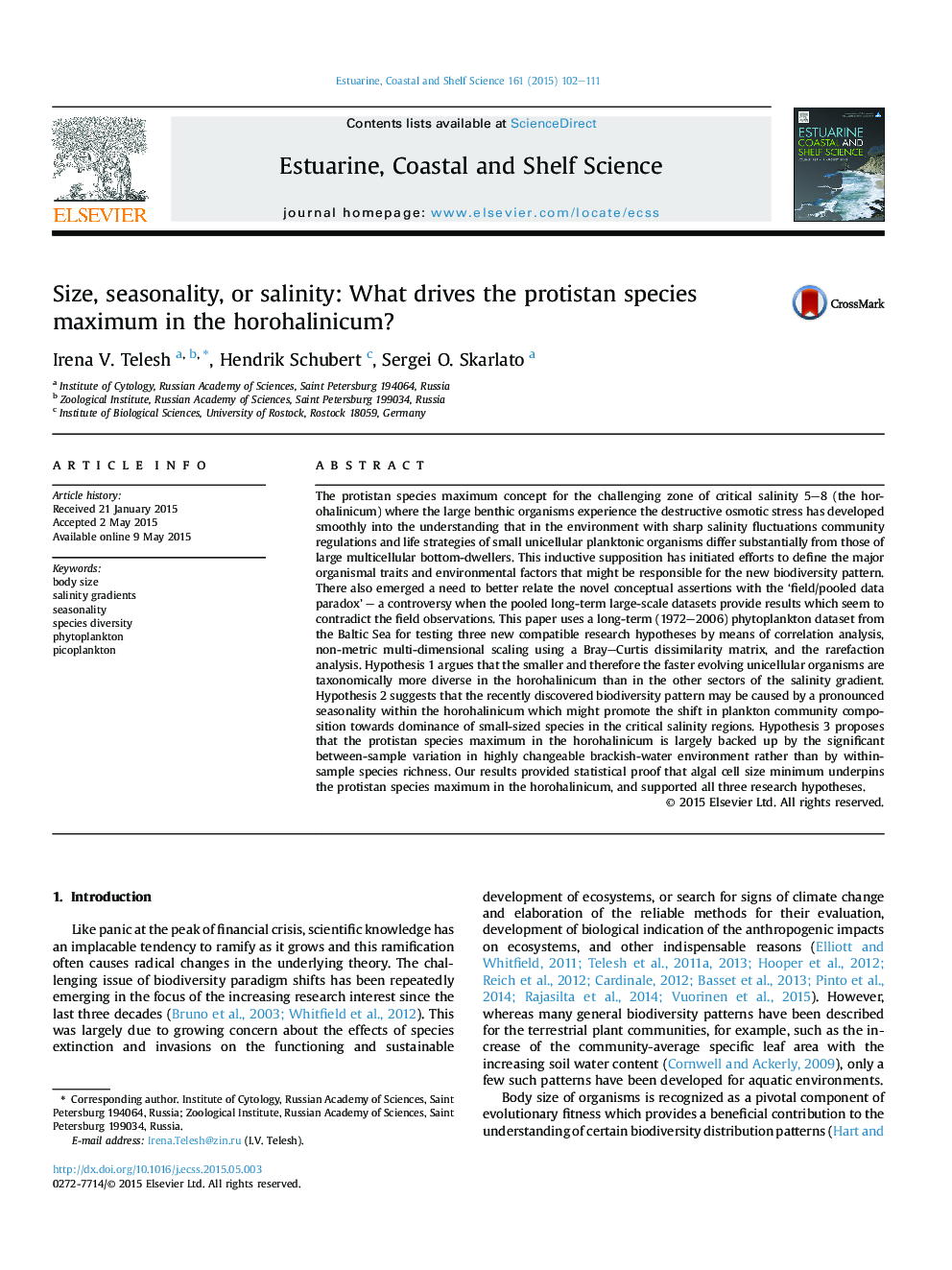| کد مقاله | کد نشریه | سال انتشار | مقاله انگلیسی | نسخه تمام متن |
|---|---|---|---|---|
| 4539466 | 1626635 | 2015 | 10 صفحه PDF | دانلود رایگان |

• Algal cell size minimum backs up the protistan species maximum.
• The smallest planktonic algal species dominate in the horohalinicum.
• Small cell size defines high adaptability of protists to critical salinity.
• Salinity fluctuations underpin peculiar spatial protistan dynamics.
• Between-sample variation resolves the ‘field/pooled data paradox’.
The protistan species maximum concept for the challenging zone of critical salinity 5–8 (the horohalinicum) where the large benthic organisms experience the destructive osmotic stress has developed smoothly into the understanding that in the environment with sharp salinity fluctuations community regulations and life strategies of small unicellular planktonic organisms differ substantially from those of large multicellular bottom-dwellers. This inductive supposition has initiated efforts to define the major organismal traits and environmental factors that might be responsible for the new biodiversity pattern. There also emerged a need to better relate the novel conceptual assertions with the ‘field/pooled data paradox’ – a controversy when the pooled long-term large-scale datasets provide results which seem to contradict the field observations. This paper uses a long-term (1972–2006) phytoplankton dataset from the Baltic Sea for testing three new compatible research hypotheses by means of correlation analysis, non-metric multi-dimensional scaling using a Bray–Curtis dissimilarity matrix, and the rarefaction analysis. Hypothesis 1 argues that the smaller and therefore the faster evolving unicellular organisms are taxonomically more diverse in the horohalinicum than in the other sectors of the salinity gradient. Hypothesis 2 suggests that the recently discovered biodiversity pattern may be caused by a pronounced seasonality within the horohalinicum which might promote the shift in plankton community composition towards dominance of small-sized species in the critical salinity regions. Hypothesis 3 proposes that the protistan species maximum in the horohalinicum is largely backed up by the significant between-sample variation in highly changeable brackish-water environment rather than by within-sample species richness. Our results provided statistical proof that algal cell size minimum underpins the protistan species maximum in the horohalinicum, and supported all three research hypotheses.
Figure optionsDownload high-quality image (117 K)Download as PowerPoint slide
Journal: Estuarine, Coastal and Shelf Science - Volume 161, 5 August 2015, Pages 102–111